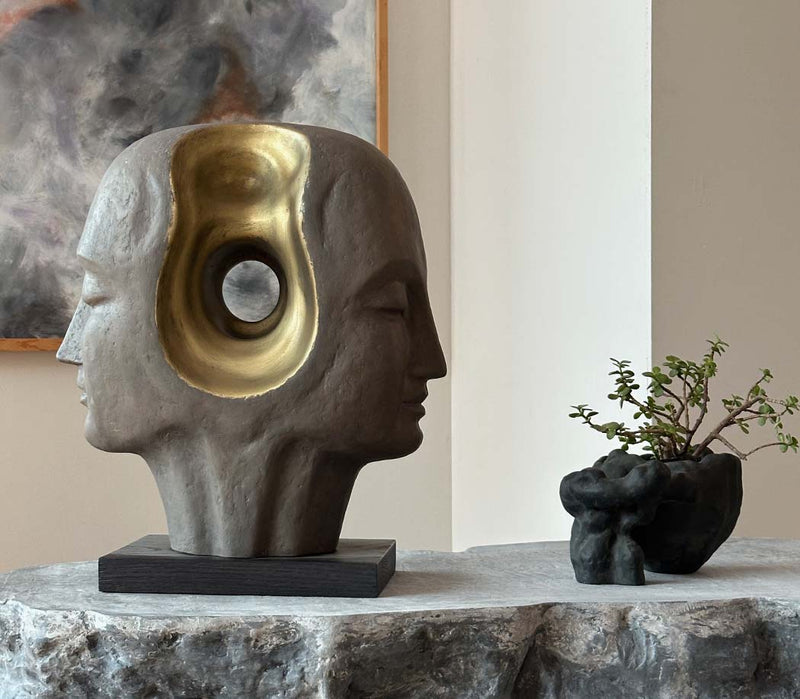To create a peaceful mind, you must also try to surround yourself with serenity, and creating a safe, zen yoga space is the right thing to do. Just like how we arrange our surroundings according to our academic, professional, or even nighttime routines, our yoga space deserves to be acknowledged, too.
Why Does Your Yoga Space Affect Your Practice?
Our room and surroundings reflect our internal state of mind. A cluttered space is often associated with messy, unorganised thoughts, and when we talk about a practice of mindfulness and internal peace, we require a yoga space that will help us transcend.
Religiously speaking, yoga has always been a medium between God and the human mind. How can we welcome God if the environment of our living space isn’t welcoming? A clean space also means a clean, organised mind. And keeping our yoga space sacred is our responsibility as the ones who practice it.
Elements That Make A Yoga Space Peaceful
To create a sacred yoga space, we’ll need a few elements to keep in mind to help us personalise it and make it beautifully ours.
Lighting: Natural vs Artificial
This can be decided based on the placement of windows in your room, sunlight hours, and the number of lights in that room.
Natural and artificial both work; however, if you wish to go for a more nature-y, earthy vibe, you can opt for natural lighting. Sunlight can brighten up your room with just the right brightness, i.e., neither too much nor too less. The rays also warm up your room, helping to create a pleasant environment with the right temperature to ease and relax your body.
For best looks, a white room with green plants or a green wall with sunlight can give your room a natural vibe. It’ll feel like you are meditating in the warm embrace of nature
For artificial lights, to create a soothing yoga space, you can go for warm lights. Nothing that is too bright or that stings your eyes! We want to close our eyes and transcend into mindfulness, and we wouldn’t want any sort of light that disrupts this process.
Floor Type
Most of our time spent doing yoga is on the floor, and we would like it better if it is comfortable as well as match the home yoga setup.
We don’t want anything that feels too cold or bulky. Wooden tiled floors seem to work best as they are flat and uniform as well as they don’t get too cold. They also give a warm, earthy look that blends beautifully with the home yoga setup we’re creating.
You can also opt for mat floors, they are warm and uniform as well; However, it can be harder to maintain and clean, and we definitely don’t want our peaceful sanctuary to become a haven for mites or dust!
Temperature And Ventilation
Practicing yoga asks for an environment that does not make us uncomfortable by being too cold or too hot, but just right (we hear you, Goldilocks)
As discussed before, sunlight helps in making the area warm and comfortable. A fan on the ceiling rotating slowly will cool the room to an optimum temperature.
Avoid ACs or heaters as they might disrupt the temperature to extremes and cause you discomfort, like too much sweating or shivering, and this might stop you from achieving the tranquility that yoga gives.
Your room should also be well ventilated to prevent any smell or air clogging. It also helps in maintaining proper airflow, which keeps your room fresh, cool, and away from any foul odor.
Remember, this is not just some exercise space, but a sacred sanctuary where we practice transcendence to a higher self.
Aesthetic And Ambience
Now that we have covered lighting, flooring, and temperature, let's focus on how to set the aesthetics in your room to create the final ambience.
Introducing plants into your space adds not just greenery, but certain plants and flowers offer health benefits, aroma, and overall good aesthetics. For instance, the Lily flower helps remove toxins from the air and has a calm white color. Lavender’s aroma is known to help in relaxing, aid stress, and even induce sleep. Aloe vera is known to be a natural air purifier, while its gel offers antiseptic properties—a perfect blend of minimalist beauty and function.
To enhance the sensory atmosphere, you can add subtle scents like lavender or rose, or light a few scented candles. Their gentle glow fills corners with a sense of warmth, coziness, and welcome.
Artwork of nature can also be placed and hung on walls. These days, crystals are also in home design fashion, and they are known to have frequency-based benefits. So, you can find one that resonates with your soul and add it to your home yoga space—a sanctuary you can call your own.
The Takeaway
Yoga isn’t just about practicing it, but living through it. It is not just a mere exercise but a ritual for your mind and body. And building a sacred safe space for this ritual that cleanses you from the inside is very important. When you do yoga, you should feel at peace and home. A place where you belong and a place that is personal to you. The aesthetics and vibes should have your essence and signature; only then do you find yourself safe and sound as you close your eyes and transcend into a realm of mindfulness and spirituality.
Frequently Asked Questions (FAQs)
-
Can I do yoga on a carpet or rug?
Absolutely! Any arrangement you find comfortable is suitable for practicing yoga at home.
-
Are scented candles or essential oils safe to use during yoga?
Yes, but make sure they are natural and have no toxic material infused. Must prioritise health.
-
How do I maintain cleanliness in my yoga space?
Dusting every day, watering plants, and applying easy-to-clean floor arrangements. Nothing extreme, just small cleaning daily will keep your space clean and healthy.

